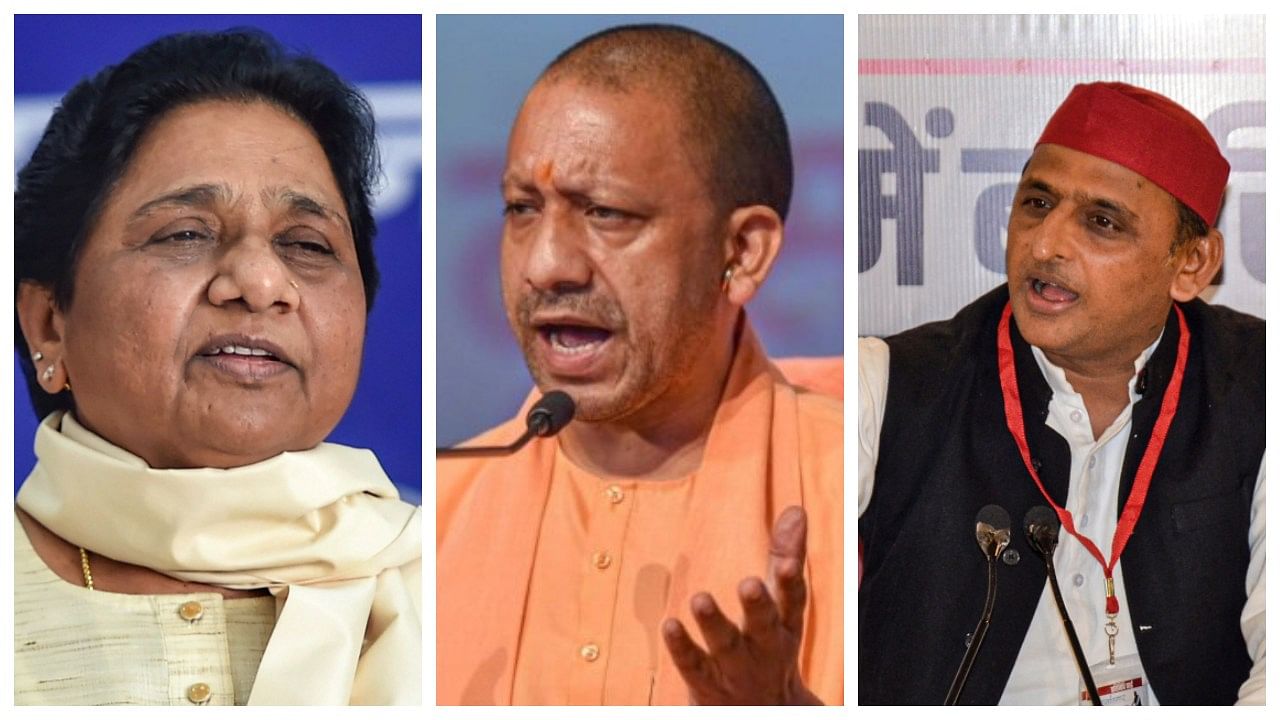
The cauldron of caste politics in Uttar Pradesh has begun heating up. With state polls just nine months away, parties representing smaller castes are flexing their muscles as dominant caste groups have already put their weight behind respective parties.
While Nishad Party leader Sanjay Nishad last week demanded deputy chief ministership in the next BJP government and boasted of contesting 160 seats, Suheldev Bhartiya Samaj Party leader Om Prakash Rajbhar on Wednesday boldly questioned the might of the bigger parties and whether they have any votes left with them. Rajbhar, who considers himself a strong leader of Rajbhar community (non-Jatav Dalit), came up with a bizarre formula of five CMs and 20 deputy CMs during a five-year tenure for this alliance, after his earlier stint as a BJP ally had been a rocky affair.
Then there are parties like Anupriya Patel's Apna Dal (S), rebel SP leader Shivpal Yadav's Pragatisheel Samajwadi Party (Lohia), Peace Party and Krishna Patel faction of Apna Dal, who have their small pockets of influence.
Samajwadi Party, which saw limitations of allying with big parties like Congress in 2018 Assembly polls and BSP in 2019 Lok Sabha, on Thursday announced its intent to ally with smaller parties. Asking people to vote for change, SP chief Akhilesh Yadav said he would have tie-ups with smaller parties for the 2022 Assembly polls.
Rajbhar, who had in past been wooed by all parties including BJP, now heads Bhagidari Sankalp Morcha (BSM) and is exploring an alliance with Trinamool Congress and AAP, which do not have much presence in UP but stand as formidable opponents of the BJP in West Bengal and Delhi respectively.
BSM, an umbrella outfit of nine smaller parties, has announced that it will contest all 403 seats but could end up being an ally of any bigger party close to the polling schedule. The outfit includes AIMIM, Jan Adhikar Party, Rashtra Uday Party, Apna Dal faction of Krishna Patel, Rashtroday Party, Rashtriya Bhagidari Party, Janta Kranti Party and Rashtriya Upekshit Samaj Party. The party it chooses may depend upon the best bargain. Mahan Dal is another party, which has some vote pockets. Most of these parties represent political aspirations of a specific caste.
Caste groups like Kahar, Kashyap, Kewat, Nishad, Bind, Bhar, Prajapati, Rajbhar, Batham, Gauriya, Turha, Majhi, Mallah, Kumhar, Dheemar, Dheewar and Machhua
Pasi, Valmikis, Kurmis, Koeris, Lodhs, Jats and Sunars have not been at the forefront of UP's power matrix. Out of the state's 44 per cent OBCs and 21 per cent Dalits, Yadavs and Jatavs (Mayawati's caste) have taken the lead and produced Chief Ministers, voting for SP and BSP respectively. Upper castes (16 per cent) have moved from Congress to BJP now and Muslims (19 per cent) vote for a party which can defeat BJP.
So, while they have opened their cards, smaller caste groups, around 35 per cent of total electorates, stand solidly behind their respective leaders who keep switching political sides. The state for now is bracing for a quadrangular contest among BJP, Congress, SP and BSP, with much depending on the alliance any of these parties manage to weave with smaller parties.
BJP has made sustained efforts to win back these caste groups, honouring their leaders. In February 2016, Amit Shah had gone to Bahraich and unveiled a statue of Suheldeo, 11th-century king while in the run-up to the 2019 Lok Sabha polls, the then BJP president Shah promised to build an 80-feet tall statue of Nishadraj in Allahabad.
Nishad or Mallah, having 5 per cent of total voters, are influential in nearly 100 seats, where their population is 15,000-70,000 strong.
When on June 22, Uttar Pradesh Chief Minister Yogi Adityanath joined senior RSS leaders for lunch at the home of Deputy Chief Minister Keshav Prasad Maurya, it was also seen as BJP's renewed attempt to consolidate votes among the non-Yadav OBCs like Kushwaha, Koeri, Kurmi, Shakya, Patel and others in UP. Kurmis, only next to Yadavs in prominence, had been left behind in political significance. It is EBC (non-Yadav OBC) and Mahadalit (non-Jatav Dalits) that has helped BJP consolidate its position in the Hindi state, besides its traditional Brahmin-Baniya vote, which later also included the Thakur votes.
Caste conferences are another strategy UP parties have adopted off late to augment their electoral appeal. BJP will soon be organising caste conferences among its core support base Vaishyas, which though constitute only 4 per cent of the total voters, influence other communities as well during their regular interaction with them. Other similar conferences by BJP and other parties are also lined up.
